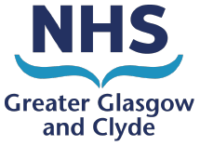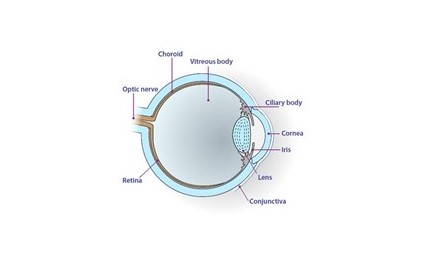Eyelids are thin folds of skin that cover and protect the eye. When blinking, the eyelid spread tears over the eye keeping it moist. There are several different types of cancer can develop on the skin of the eyelid.
The large majority of these can be managed at your local hospital. If there are concerns, however, of the cancer spreading behind the eye or else where in the body then we may be asked to help.
Please see the different eyelid tumours below.
Basal Cell Carcinoma
a) What is basal cell carcinoma?
Basal cell carcinoma (BCC) is the commonest type of skin cancer. The number of BCCs diagnosed is increasing every year due to the hotter summers in the UK and increasing foreign travel. These can grow on the skin of your eyelid. Due to their appearance they are often called ‘rodent ulcers’. They can grow along the eyelid, and if left untreated, can spread into or behind the eye. It is very rare for BCCs to spread around the body and can be cured if removed.
b) What are the symptoms of basal cell carcinoma?
Usually they are painless. They often look like a flat red mark, or have a pearly rim surrounding a crater. Sometimes they can bleed and scab over.
c) Risk Factors Risk factors for this condition include:
• Sun damage
• Fair skin
• Previous basal cell carcinomas
• Open wounds that resist healing
• Exposure to ionising radiation
• Chronic inflammatory skin conditions
d) What tests will I need?
A biopsy may be taken from the affected area. If it is suspected that the BCC has started to spread into the eye or behind the eye, scans may have to be performed. These may include:
• CT scan
• MRI scan
• Ultrasound scan
e) How are basal cell carcinomas treated?
Treatments include:
• Surgery (surgical excision)
• Radiotherapy
• Chemotherapy cream (5 Fluorouracil)
After surgery, the eyelid is reconstructed to make the eyelid appear and function as normal as possible. This may be carried out as a separate operation.
Squamous Cell Carcinoma
a) What is squamous cell carcinoma?
Squamous cell carcinoma (SCC) is the second most common skin cancer behind basal cell carcinoma. This is more aggressive, however, and can spread to other parts of the body. It can be tricky to diagnose on clinical appearance alone. The number of SCCs diagnosed in the world, and in the UK, is increasing each year. They are more common in Caucasians, in the elderly and in the male population.
b) What are the risks of squamous cell carcinoma spreading around the body?
Factors that increase the risk of metastases include:
• Large SCC greater than 2cm in diameter or deeper than 4mm
• SCC after radiation treatment
• SCC recurrence after surgical resection
• Long standing ulceration from Bowen’s disease (skin condition)
• Patients with a poor immune system from certain treatments or diseases
If the cancer has started to spread swelling of the lymph nodes around your ear or under your chin may occur.
c) What are the symptoms of squamous cell carcinoma?
They often appear as a non-healing ulcer with hard raised edges. There may be redness, crusting or bleeding. They commonly occur on the lower eyelid. Decreased vision may occur if the cancer spreads behind the eye.
d) What are the risks of getting squamous cell carcinoma?
Risk factors for this condition include:
• Sun damage
• Fair skin
• Pre-malignant conditions such as Bowens disease, actinic keratosis or keratoacanthomas.
• Poor immune system (e.g. HIV)
e) What tests will I need?
A biopsy will likely be taken. If there is high suspicion of SCC, the abnormal area of skin may be completely removed in theatre. If it is suspected that the SCC has started to spread into the eye or behind the eye we may arrange the following scans:
• CT scan
• MRI scan
• Ultrasound scan
f) Management Treatments include:
• Surgery (surgical excision)
• Radiotherapy
• Chemotherapy cream (5 Fluorouracil)
After surgery, the eyelid is reconstructed to make the eyelid appear and function as normal as possible. This may be carried out as a separate operation.
Sebaceous Gland Carcinoma
a) What is sebaceous gland carcinoma?
Sebaceous gland carcinoma is a rare and aggressive type of skin cancer. They grow from sebaceous glands, which normally produce our oil for our skin. These glands are also found in the eyelids. This can be tricky to diagnose as it is often mistaken for a chalazion or blepharitis – two common benign eyelid conditions. If there is a delay in treatment then the tumour may spread to other parts of the body including the liver, lungs, brain and bones. This can occur in up to a quarter of patients.
b) What are the symptoms of sebaceous gland carcinoma?
This commonly looks like a small, red or yellow, firm lump on the eyelid. This may gradually increase in size and cause irritation to the eye.
c) What are the risks of getting sebaceous gland carcinoma?
The following increase your risk of getting sebaceous gland carcinoma:
• Getting benign adenomas (non cancerous lumps) of the skin.
• Exposure to radiation e.g. radiotherapy to the face
• Asian ethnicity Spreading to other areas of the body unfortunately occurs in around 1 out of 5 cases.
d) Will I need any tests?
After taking a picture we will likely take a biopsy of the suspicious area and send it to the laboratory for testing. If we suspect the cancer has spread behind the eye or to other parts of the body we may organise the following scans:
• Chest X-ray
• CT scan
• MRI scan
e) What is the treatment for sebaceous gland carcinoma?
Treatments include:
• Surgery (surgical excision)
• Radiotherapy
• Chemotherapy cream (5 Fluorouracil)
After surgery, the eyelid is reconstructed to make the eyelid appear and function as normal as possible. This may be carried out as a separate operation Biopsy or removal of the lymph nodes may have to be performed if we suspect is has spread from the eyelid to the lymph nodes. Unfortunately the tumour can grow back after treatment.
Eyelid Melanoma
a) What is melanoma?
Melanoma is a serious type of skin cancer which can affect the eyelids. It grows from cells called melanocytes, which normally produce pigment in our skin, hair, and eyes. This gives them a dark and pigmented appearance Eyelid melanoma, although less common than other skin tumours, is dangerous because it can spread around the body if not treated early.
b) What are the symptoms of melanoma?
The following skin changes may be due to melanoma:
• Increased pigmentation or darkening of the skin
• A new mole
• A change in an existing mole
These are more likely to have an irregular shape, be more than one colour, and grow quickly.
c) What are the risks of getting eyelid melanoma?
The following increase your risk of getting eyelid melanoma:
• Pale skin
• Large numbers of moles or freckles
• Red or blond hair
• Blue eyes
• Poor immune system (e.g. HIV)
Melanoma can be prevented with good skin care when travelling abroad or in sunny climates. Careful monitoring of pigmented areas of skin is key to detecting skin melanoma early.
d) Will I need any tests?
We will likely take photographs to monitor changes. If the diagnosis is uncertain we may take remove all of the abnormal area and send it to the laboratory for where a diagnosis can be made . If it is suspected that the melanoma has started to spread to other parts of the body then we may organise the following scans:
• CT scan
• MRI scan
Blood tests, including liver function tests, may be carried out if spread to the liver is suspected. Liver ultrasounds carried out every year to monitor for spread at your local hospital.
e) What is the treatment for eyelid melanoma?
Treatments include:
• Surgery
• Radiotherapy
• Chemotherapy
If radiotherapy or chemotherapy is needed, our medical oncologist and pathologist will help guide our treatment.
f) What happens if the eye melanoma spreads to different parts of the body?
This can be scary and upsetting. If spread of disease has been picked up we involve other health professionals at our MDT (multidisciplinary team) meeting. Our clinical team consists of a radiologist, pathologist, and a medical oncologist. Collectively we will decide on the rights tests and treatments for you as an individual. Accepting and coming to terms with the diagnosis can be challenging. For this reason, we have specialist ophthalmic nursing staff in the clinic who are here to council and help you through this difficult time.

